
Association football, more commonly known as football or soccer, is a team sport played between two teams of 11 players each, who primarily use their feet to propel a ball around a rectangular field called a pitch. The objective of the game is to score more goals than the opposing team by moving the ball beyond the goal line into a rectangular-framed goal defended by the opposing team. Traditionally, the game has been played over two 45-minute halves, for a total match time of 90 minutes. With an estimated 250 million players active in over 200 countries and territories, it is the world's most popular sport.
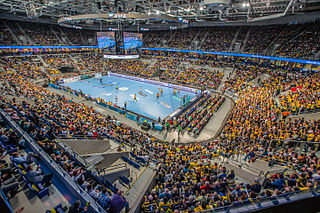
Handball is a team sport in which two teams of seven players each pass a ball using their hands with the aim of throwing it into the goal of the opposing team. A standard match consists of two periods of 30 minutes, and the team that scores more goals wins.

Korfball is a ball sport, with similarities to netball and basketball. It is played by two teams of eight players with four female players and four male players in each team. The objective is to throw a ball into a netless basket that is mounted on a 3.5 m high pole.

Volleyball is a team sport in which two teams of six players are separated by a net. Each team tries to score points by grounding a ball on the other team's court under organized rules. It has been a part of the official program of the Summer Olympic Games since Tokyo 1964. Beach volleyball was introduced to the programme at the Atlanta 1996 Summer Olympics. The adapted version of volleyball at the Summer Paralympic Games is sitting volleyball.

Gaelic football, commonly known as simply Gaelic, GAA or Football is an Irish team sport. A form of football, it is played between two teams of 15 players on a rectangular grass pitch. The objective of the sport is to score by kicking or punching the ball into the other team's goal or between two upright posts above the goal and over a crossbar 2.5 metres above the ground.

Futsal is a football-based game played on a hardcourt like a basketball court, smaller than a football pitch, and mainly indoors. It has similarities to five-a-side football and indoor football.

A try is a way of scoring points in rugby union and rugby league football. A try is scored by grounding the ball in the opposition's in-goal area. Rugby union and league differ slightly in defining "grounding the ball" and the "in-goal" area. In rugby union a try is worth 5 points, in rugby league a try is worth 4 points.

Ball badminton is a sport native to India. It is a racket sport game, played with a yellow ball made of wool, on a court of fixed dimensions divided by a net. The game was played as early as 1856 by the royal family in Tanjore, the capital of Thanjavur district in Tamil Nadu, India. It enjoys the greatest popularity in India. Ball badminton is a fast-paced game; it demands skill, quick reflexes, good judgment, agility, and the ability to control the ball with one's wrist.

In the sport of association football, fouls and misconduct are acts committed by players which are deemed by the referee to be unfair and are subsequently penalised. An offence may be a foul, misconduct or both depending on the nature of the offence and the circumstances in which it occurs. Fouls and misconduct are addressed in Law 12 of the Laws of the Game. A foul is an unfair act by a player, deemed by the referee to contravene the game's laws, that interferes with the active play of the game. Fouls are punished by the award of a free kick to the opposing team. A list of specific offences that can be fouls are detailed in Law 12 of the Laws of the Game ; these mostly concern unnecessarily aggressive physical play and the offence of handling the ball. An infringement is classified as a foul when it meets all the following conditions:
- It is committed by a player ;
- It occurs on the field of play;
- It occurs while the ball is in play;
- It is committed against an opponent.

The ball in and out of play is the ninth law of the Laws of the Game of association football, and describes to the two basic states of play in the game.

Penalty cards are used in many sports as a means of warning, reprimanding or penalising a player, coach or team official. Penalty cards are most commonly used by referees or umpires to indicate that a player has committed an offense. The official will hold the card above their head while looking or pointing toward the player who has committed the offense. This action makes the decision clear to all players, as well as spectators and other officials in a manner that is language-neutral. The colour or shape of the card used by the official indicates the type or seriousness of the offence and the level of punishment that is to be applied. Yellow and red cards are the most common, typically indicating, respectively, cautions and dismissals.
The following terms are used in water polo. Rules below reflect the latest FINA Water Polo Rules.
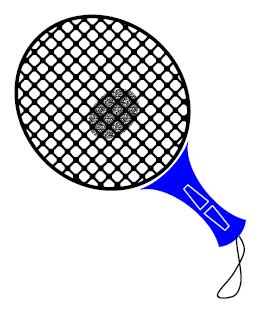
Speed-Ball is a racquet sport invented in Egypt in 1961 by Mohamed Lotfy, father of Hussein Lotfy and Ahmad Lotfy, for the training of beginner tennis players. Today it is a sport in its own right, enjoying popularity not only in Egypt but in other countries. Several of these countries make up the International Federation of Speed-Ball (FISB).
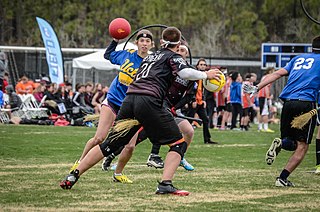
Quidditch, also known as quadball since 2022, is a team sport that was created in 2005 at Middlebury College in Middlebury, Vermont, United States, and was inspired by the fictional game of the same name in the Harry Potter books by the author J. K. Rowling. Two teams of seven players each, astride broomsticks and opposing each other on a rectangular pitch, compete with the primary objective of passing a ball through the defenders' hoops, while preventing their opponents from passing it through their own hoops. The real-world sport is sometimes referred to as "muggle quidditch" to distinguish it from the fictional game of the books, which involves magical elements such as flying broomsticks and enchanted balls—a muggle in the Harry Potter series being a person without magical abilities. The sport is played around the world.

Newcomb ball (also known simply as Newcomb, and sometimes spelled Newcombe (ball)) is a ball game played in a gymnasium or court using two opposing teams and a net. Newcomb ball and the sport of volleyball were both created in 1895 and are similar in their design. The sport rivaled volleyball in popularity and participation by the 1920s. The sport of throwball may be a possible relative.
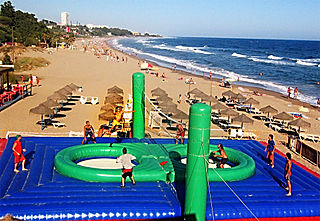
Bossaball is a team sport that originated in Brazil and was conceptualised by Belgian Filip Eyckmans in 2004. Bossaball is a ball game between two teams, combining elements of volleyball, football, and gymnastics with music into a sport. It is played on an inflatable court featuring a trampoline on each side of the net. The trampolines allow the players to bounce high enough to spike the ball over the net.

Association football was first codified in 1863 in England, although games that involved the kicking of a ball were evident considerably earlier. A large number of football-related terms have since emerged to describe various aspects of the sport and its culture.

Ringball is a traditional South African sport that stems from basketball and has been played since 1907. The sport is now promoted in South Africa, Namibia, Botswana, Lesotho, India, and Mauritius to establish Ringball as an international sport. The sport is played by both men and women teams.
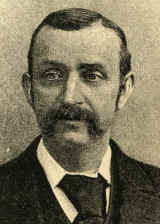
The rules of water polo are the rules and regulations which cover the play, procedure, equipment and officiating of water polo. These rules are similar throughout the world, although slight variations do occur regionally and depending on the governing body. Governing bodies of water polo include FINA, the international governing organization for the rules; the NCAA, which govern the rules for collegiate matches in the United States; the NFHS, which govern the rules in high schools in the USA; and the IOC, which govern the rules at Olympic events.
Snow volleyball is a winter team sport played by two teams of three players on a snow court divided by a net. The objective of each team is to score points by sending a ball over the net so as to ground it on the opponent's court, and to prevent the same effort by the opponent. A team is allowed up to three touches to return the ball across the net, and individual players may not touch the ball twice consecutively.





















